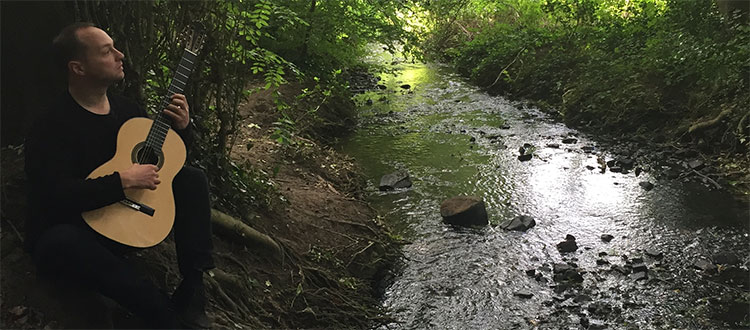Visualisation for Guitarists
Visualisation for Guitarists Part 1 – Visual Motor Rehearsal Visualisation – A Guitarist’s Power Tool
In my years of teaching and helping classical guitarists I have found the technique of visualisation or visual motor rehearsal to be of great benefit to developing players. I believe that in order to learn deeply we must approach our subject from many different angles and visualisation gives us one such angle. It is a powerful tool to aid our technical and musical development, cultivate greater security and overcome any stage fright. This article will focus on the technique as brain training revealing how to use visualisation as a powerful way to train the brain and nervous system and achieve better results in our guitar playing.
Part 1 will describe the technique of Visual Motor Rehearsal. Dr Denis Waitly author of The Psychology of Winning describes how he used this technique to help Olympic athletes:
I took the visualisation process from the Apollo Program, and instituted it during the 1980’s and ’90’s into the Olympic program. It was called Visual Motor Rehearsal. When you visualise you materialise. Here’s an interesting thing about the mind: we took Olympic athletes and had them run their event in their mind, and then hooked them up to sophisticated biofeedback equipment. Incredibly, the same muscles fired in the same sequence when they were running the race in their mind as when they were running on the track. How could this be? Because the mind can’t distinguish whether you’re really doing it or whether it’s just a practice. If you’ve been there in the mind you’ll go there in the body – Denis Waitley
I find it fascinating that athletes use this and in many ways musicians are athletes of the hands so how can we apply this to guitar playing? Many famous guitarists use the technique in one way or another. My own teacher taught students to rehearse the finger movements of each hand away from the guitar and I have heard many great guitarists including Manuel Barrueco, David Russell, Simon Dinnigan and Benjamin Verdery all talk about visualisation. The great guitarist Sharon Isbin has been known to learn pieces in her mind whilst traveling and I can speak from my own direct experience that I always play better in concert when I have used visualisation as part of my practice. With so much to suggest its effectiveness, let us put it into practice. Here is a simple method:
- Choose a short passage of music. It is best to start with something easy and familiar.
- Start with the left hand. This is usually easier as it is more visual in nature.
- “Play” the passage of music slowly and accurately in your mind. Just using the left hand moving the fingers and seeing the fretboard in your mind. I like to rest my fingers on my opposite arm as this gives me more accurate feedback. Notice any mistakes, grey areas or uncertainty in the hand and go back and correct them homing in on the problem areas.
- Repeat this until you can play it without any mistakes in your mind. Remember Repetition is the Mother of Skill and repetition with the goal of continuing improvement cultivates the best results.
- Switch hands. It is essential that guitarists know exactly what their right hand is doing at all times. Please see my article on this subject Cultivating Right Hand Technique. This can be trickier as our right hand patterns are less visual in nature, however with perseverance we can gain a clear idea of the patterns.
- Visualise hands together. Once you have achieved confidence in both hands separately you are ready to bring them together. The process is the same, working away from the guitar run through the passage noticing and correcting and mistakes until you can play it correctly and confidently in your mind. Now add in dynamics, tone colours, voicing ruato, etc. Release your creativity and bring the music to life!
- Conditioning It. Once you have achieved this, condition your desired result into your nervous system through repetition over several days. As we repeat the movements we are building stronger neuro-connections and stronger habits and are more likely to retain the information.



